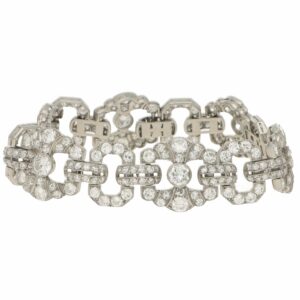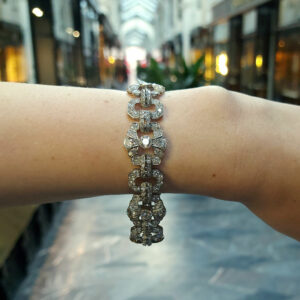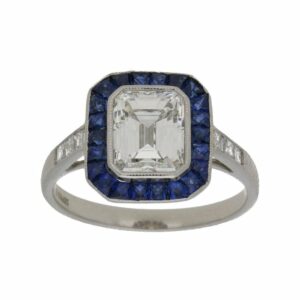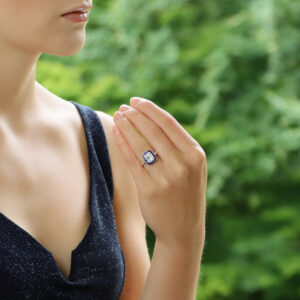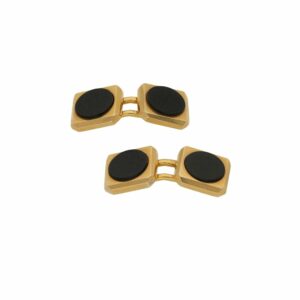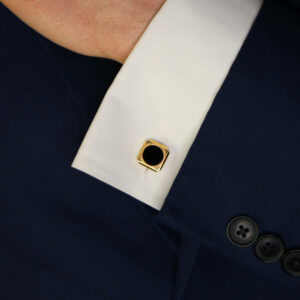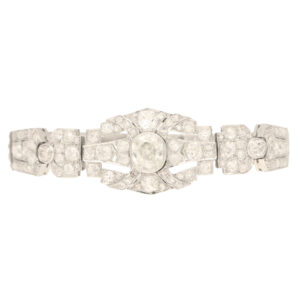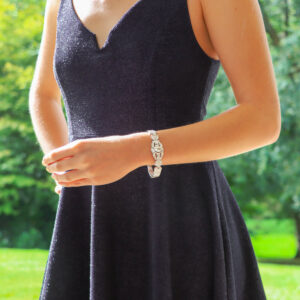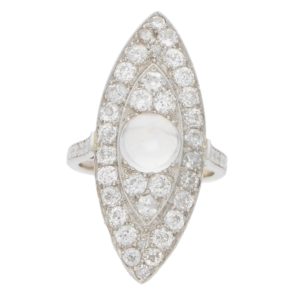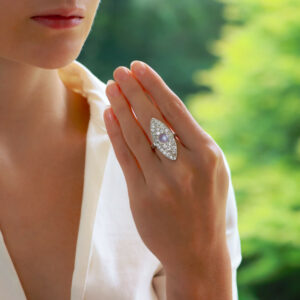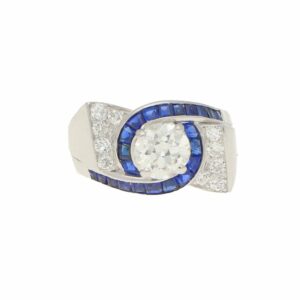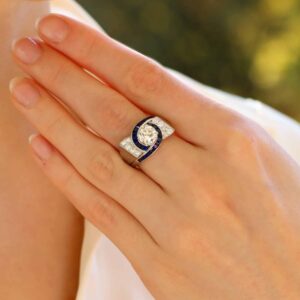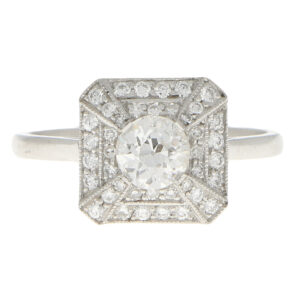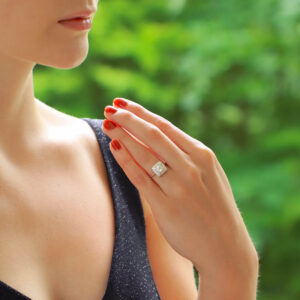The popularity of the famous Art Deco period has seen jewellery, architecture and furniture from the era celebrate many revivals. This can make defining authentic Art Deco items difficult, but most experts agree that for a piece to be considered truly Art Deco then it needs to have been manufactured in the time frame between the two world wars.
Unlike previous periods defined by Royal reigns, the time frame of Art Deco is considered to be more fluid. A recent Art Deco exhibition at the V&A Museum in London stated that the dates to define the Art Deco period includes pieces that were made between 1910 and 1939. However, there are some pieces that came out earlier, with the earliest Art Deco pieces originating in 1919 as the previous period, Art Noveau, began to evolve to include sharper lines and bold geometric shapes. Some of the most famous and recognisable Art Deco pieces are from New York City and include the Chrysler Building, designed by William Van Alen, and the landmark Rockerfeller centre which opened in 1930.
The Art Dreco period favours graphic, linear and geometric shapes and designs. Art Deco was influenced globally by motifs that had originally appeared in China and Japan as well as India and Egypt. Primarily a product of the ‘Roaring 20s’, the Art Deco movement emerged during a decadent era following the war. Across Europe and the Americas there was a sudden rejection of the strict Victorian ideals that has prevailed during the war which was mirrored in jewellery pieces.
The movement takes its name from the Exposition Internationale des Arts Décoratifs et Industriels Modernes (the International Exposition of Modern Decorative and Industrial Arts) – an exposition that took place in Paris in 1925 and spiked a surge in the popularity of the movement and its designs.
Art Deco rejected the soft, delicate and flowing forms of the Art Noveau. World War I had just finished and the masses took to this new design form as a positive expression following the dark years of war. Women in particular were enjoying a period of liberation which was reflected in their hairstyles, lifestyles and clothing. Dresses became shorter, make up became bolder, and women wanted a new jewellery style to go with their new look. Improvements in manufacture meant that this was possible on a wide scale. Machines could make the jewellery with Art Deco’s clean lines and they could make more pieces than had ever been possible before.
There were also exciting archaeological discoveries which influenced pieces of the time. Discoveries in the Valley of the Kings in Egypt, most notably the tomb of Tutankhamen, influenced designs and became popular jewellery motifs. Images of pyramids, the eye of Horus and lotus blossoms all became popular jewellery motifs. Art Deco pieces often combine a strong geometric structure with an expression. Jewellery houses including Boucheron, Van Cleef & Arpels and Cartier and, in the United States, Raymond Yard all began to embrace the movement.
Cartier stands out as one of the pioneering designers of the era. In particular the jeweller’s famous Tutti Frutti design which included carved, coloured gemstones influenced by the Mughal period in India. The designer’s famous feline creation – the panther bracelet – which first came out in 1914 is also celebrated as one of the most famous and influential designs of the era.
Platinum was the most widely used material of the era alongside diamonds, emeralds, sapphires and rubies. Advancements in technology saw more intricate cuts being made in gemstones as well as a wider use of colour in pieces.
Price points of Art Deco jewellery can start as low as £1,500 for a simple piece like a bar pin. Prices can rise to as much as £8-16,000 for larger pieces like bracelets and necklaces, even in cases where they have not been signed. Larger and more elaborate pieces that have been signed can sell for upwards of £800,000 at auction.
French jewellery designers ruled the Art Deco scene, with designers including Jean Fouquet, Gerard Sandoz, Raymond Templier, Jean Desprks, Mauboussin, Boucheron, Van Cleef & Arpels, Lacloche, Chaumet, as well as Cartier who also specialised in clocks and wrist watches which gained popularity during the Art Deco period. Cartier’s designs typically included diamond and platinum as decorations.
Danish silversmith and sculptor Georg Jensen also produced creative jewellery and silverware designs contributing to the movement. Jensen worked primarily with gemstones and silver in his designs, which tended to reflect the early Art Deco style. American jewellers produced many popular Art Deco pieces that remain famous today. Most notably Tiffany and Co designed a number of highly stylised Art Deco items as well as a number of clocks.
The Art Deco period officially came to a halt as World War II broke out in 1939. Focus moved away from decadence to function as war preparations began, but the movement did not stay buried for long.
The movement experienced its first resurgence in 1982 with the “Retrospective Louis Cartier, Masterworks of Art Deco,” exhibition in Los Angeles. The movement has remained popular and its signature styles remain fashionable today. Experts consider the movement as one of the most unique episodes in the development of design of the twentieth century.


